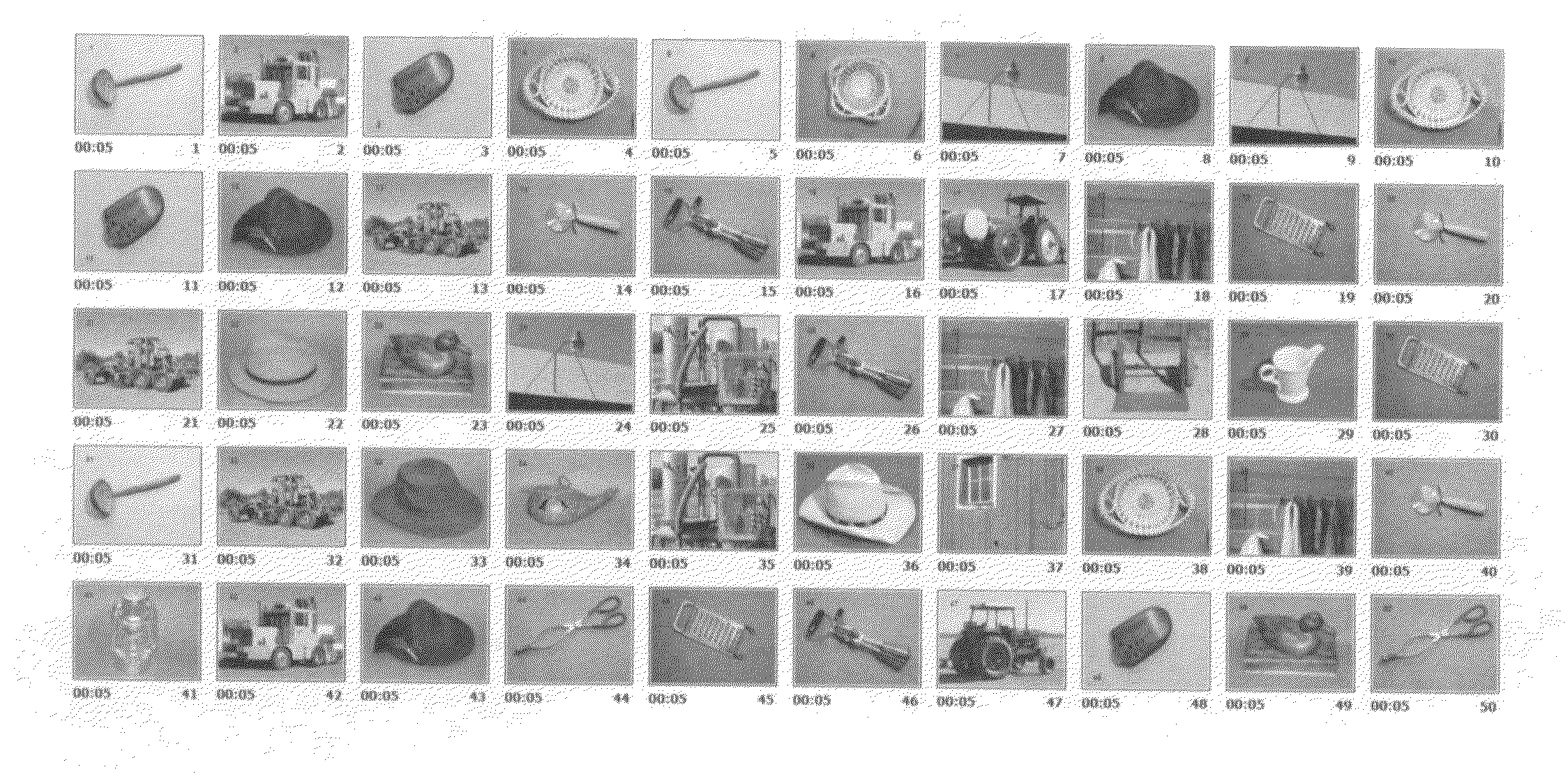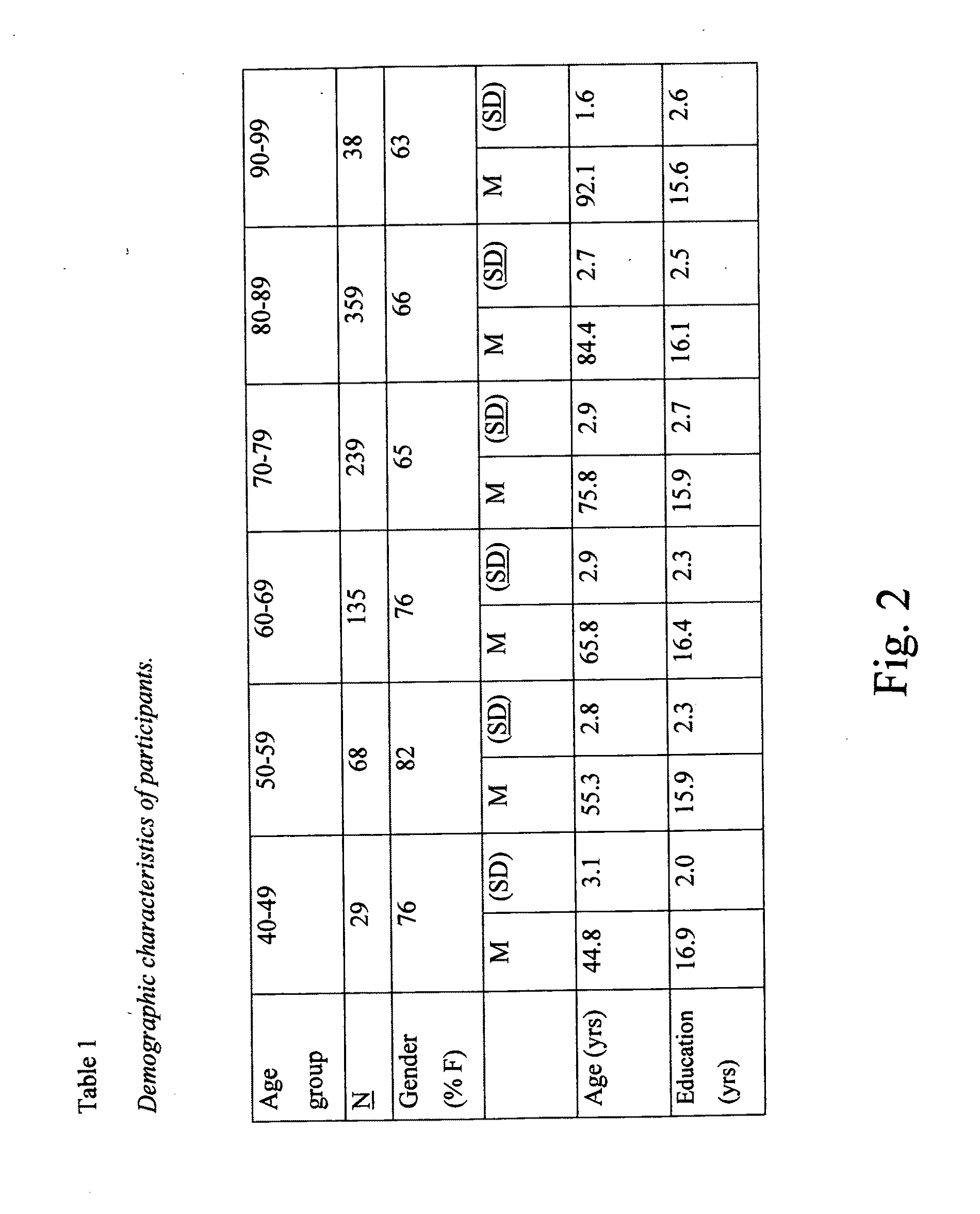Memory test for alzheimer's disease
- Summary
- Abstract
- Description
- Claims
- Application Information
AI Technical Summary
Benefits of technology
Problems solved by technology
Method used
Image
Examples
Embodiment Construction
ach data point representing the performance of an individual participant.
[0068]FIG. 4 shows the relationship between discriminability (d′) and age on the VNBT with each data point representing the score (d′) of an individual participant. One individual whose score was unusually poor (d′=−2.64) was removed from the plot. The dashed line shows an inverted exponential regression curve which was initially fitted to 4 minus the d′ values.
[0069]FIG. 5 shows the relationship between discriminability performance (d′) and age in 868 individuals on the VNBT with numbers inside the bars indicating the group n. The bars show the mean discriminability score for each age group and brackets show SEM.
[0070]FIG. 6 shows the same data is shown with brackets showing one standard deviation on either side of the mean.
[0071]FIG. 7 shows the relationship between discriminability performance (d′) and education in 868 individuals on the VNBT with numbers inside the bars indicating the group n. The bars show...
PUM
 Login to View More
Login to View More Abstract
Description
Claims
Application Information
 Login to View More
Login to View More - R&D
- Intellectual Property
- Life Sciences
- Materials
- Tech Scout
- Unparalleled Data Quality
- Higher Quality Content
- 60% Fewer Hallucinations
Browse by: Latest US Patents, China's latest patents, Technical Efficacy Thesaurus, Application Domain, Technology Topic, Popular Technical Reports.
© 2025 PatSnap. All rights reserved.Legal|Privacy policy|Modern Slavery Act Transparency Statement|Sitemap|About US| Contact US: help@patsnap.com



